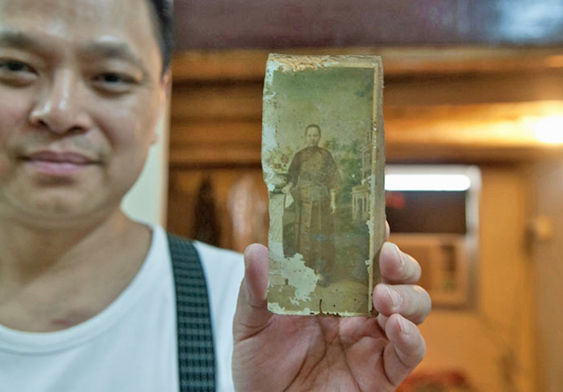
Ng Chin Hung
An indigenous villager landlord with a distinguished family background
11/12
 BACK BACK |
 CLOSE CLOSE |

Ng Chin Hung and his great-grandmother
In 1966, when Ng Chin Hung was just 6, his great-grandmother, who originally came from Tai Wai, died in Nga Tsin Wai at the age of 106-Photo taken by HKMP Team (2012)
Ng Chin Hung and his great-grandmother
In 1966, when Ng Chin Hung was just 6, his great-grandmother, who originally came from Tai Wai, died in Nga Tsin Wai at the age of 106-Photo taken by HKMP Team (2012)
Unique native place and dialect of Nga Tsin Wai’s villagers
Since he was very young, Ng Chin Hung understood and spoke Punti. This dialect was also used by indigenous inhabitants of New Territories’ walled villages, Shenzhen and Dongguan. While working in the Mainland, Ng Chin Hung met many local indigenous inhabitants with whom he felt particularly easy and close whenever they communicated in Punti. Adhering to the spirit of his father, he claimed Baoan as his place of origin, proclaiming himself to be a ‘Nantou citizen’, instead of being a Hongkonger, whenever encountering Shenzhen locals in order to enhance mutual intimacy. Nga Tsin Wai village had been included in Shenzhen’s Nantou catchment area during the Qing Dynasty (1644-1912). The full name of the villagers’ place of origin during the British rule was ‘Shenzhen Nantou Kowloon Nga Tsin Wai Village’. Ng Chin Hung thought that ‘indigenous inhabitant’ was too common a term and that before British rule, Nga Tsin Wai people could claim to be the original residents of the area. Ng Chin Hung eventually wrote to the Government saying that his ancestors could trace their Hong Kong roots back around 600 years – a period which included no fewer than seven major Chinese dynasties: Song, Yuan, Ming, Qing, the Republic of China, British Hong Kong and the People’s Republic of China.

